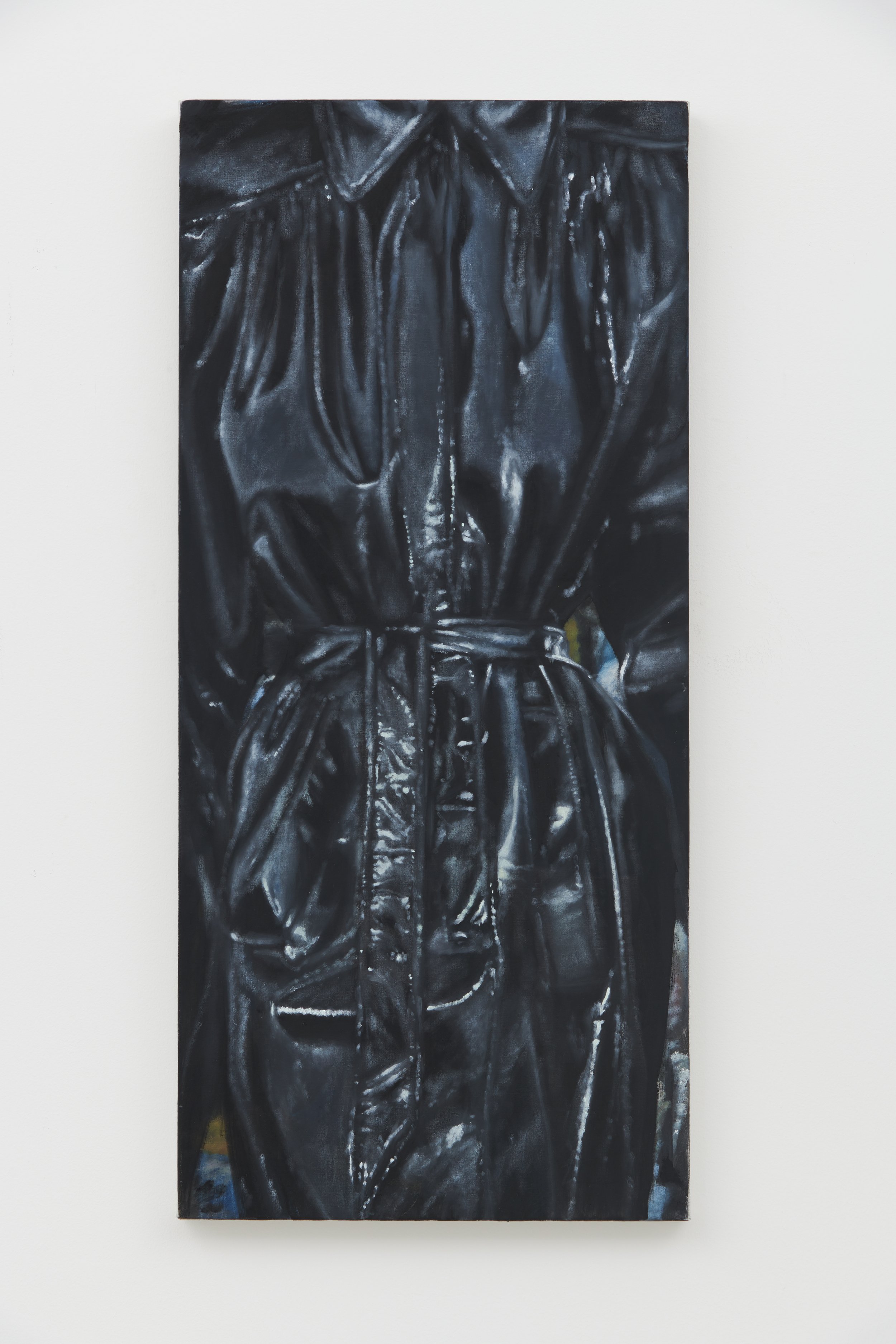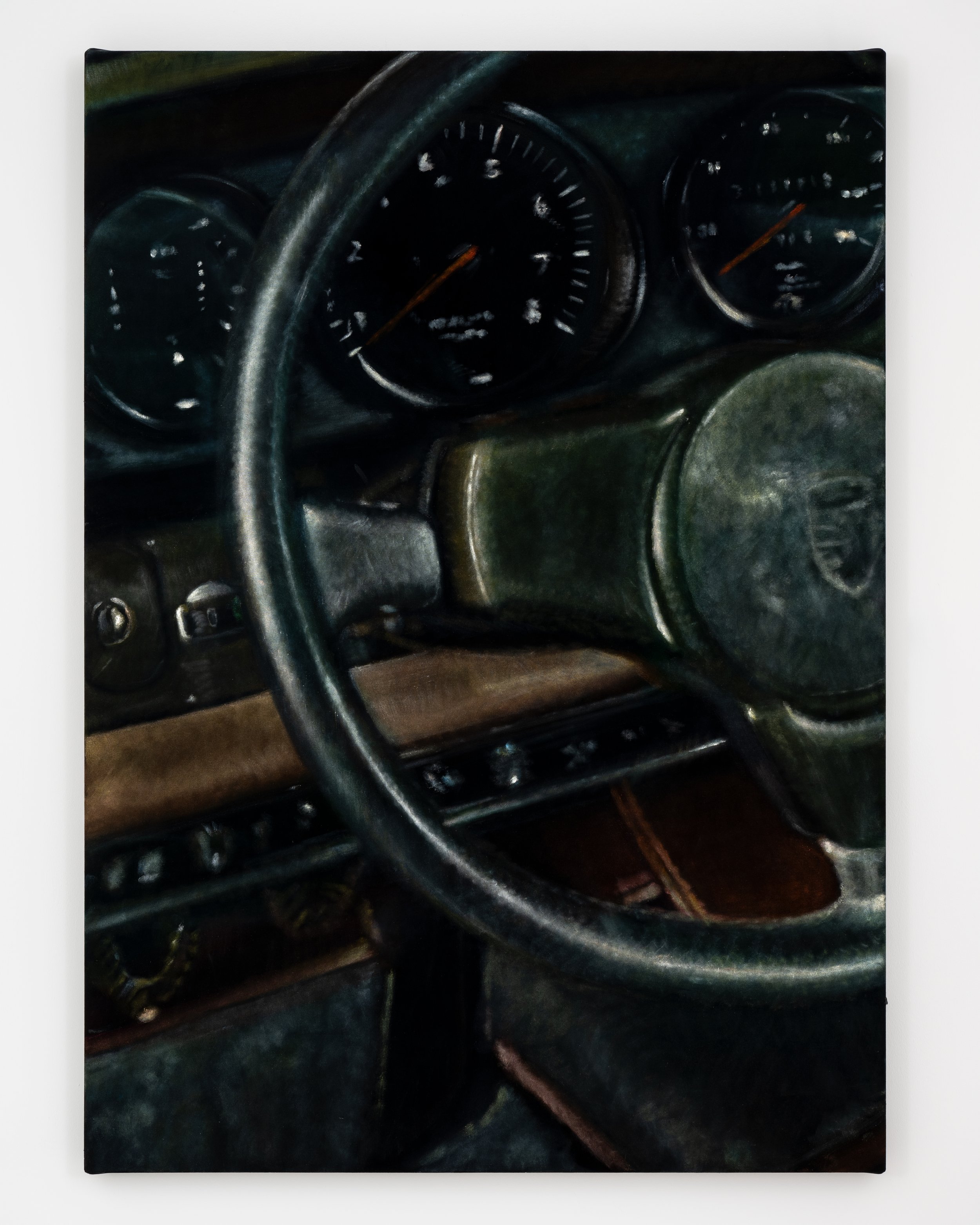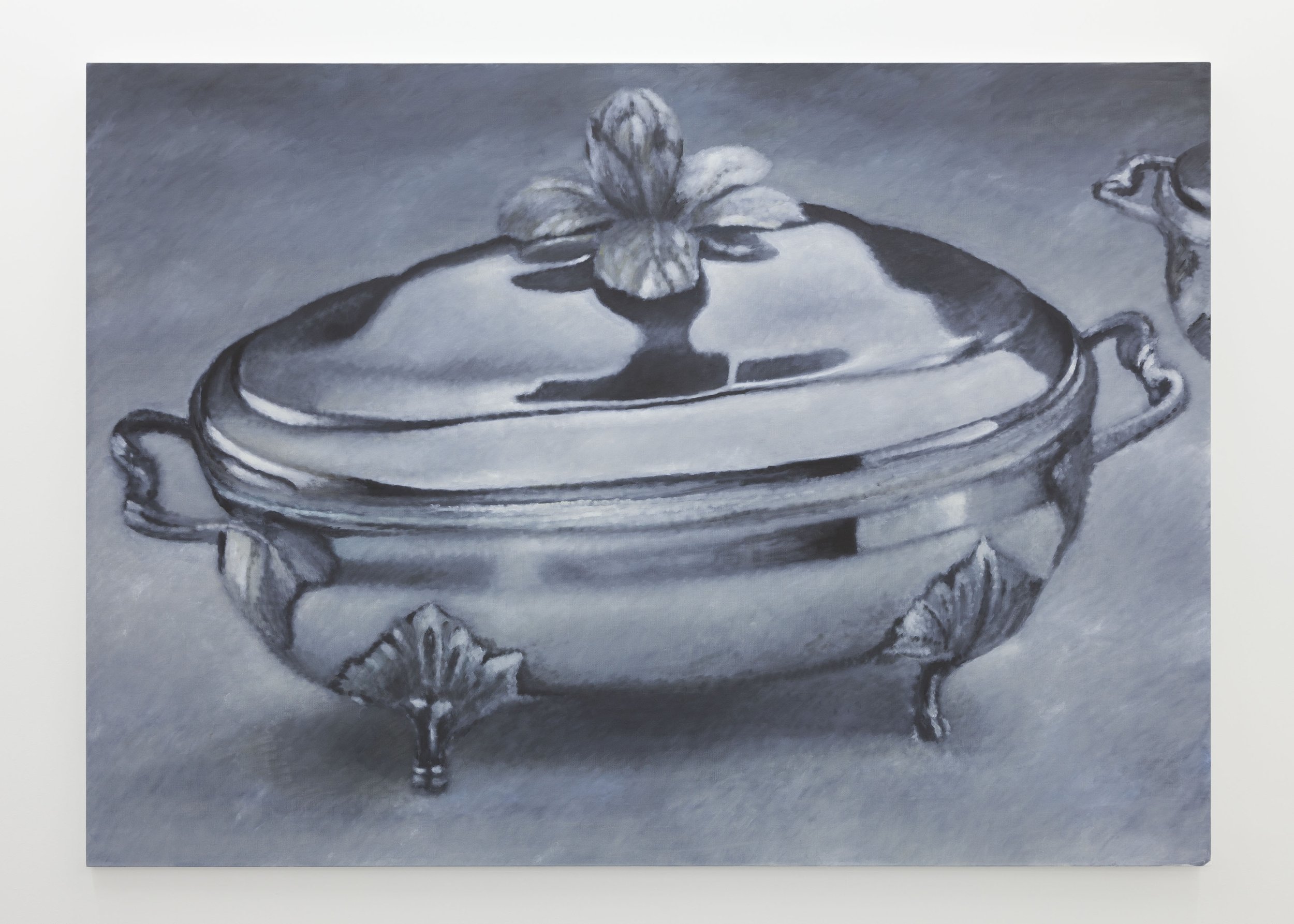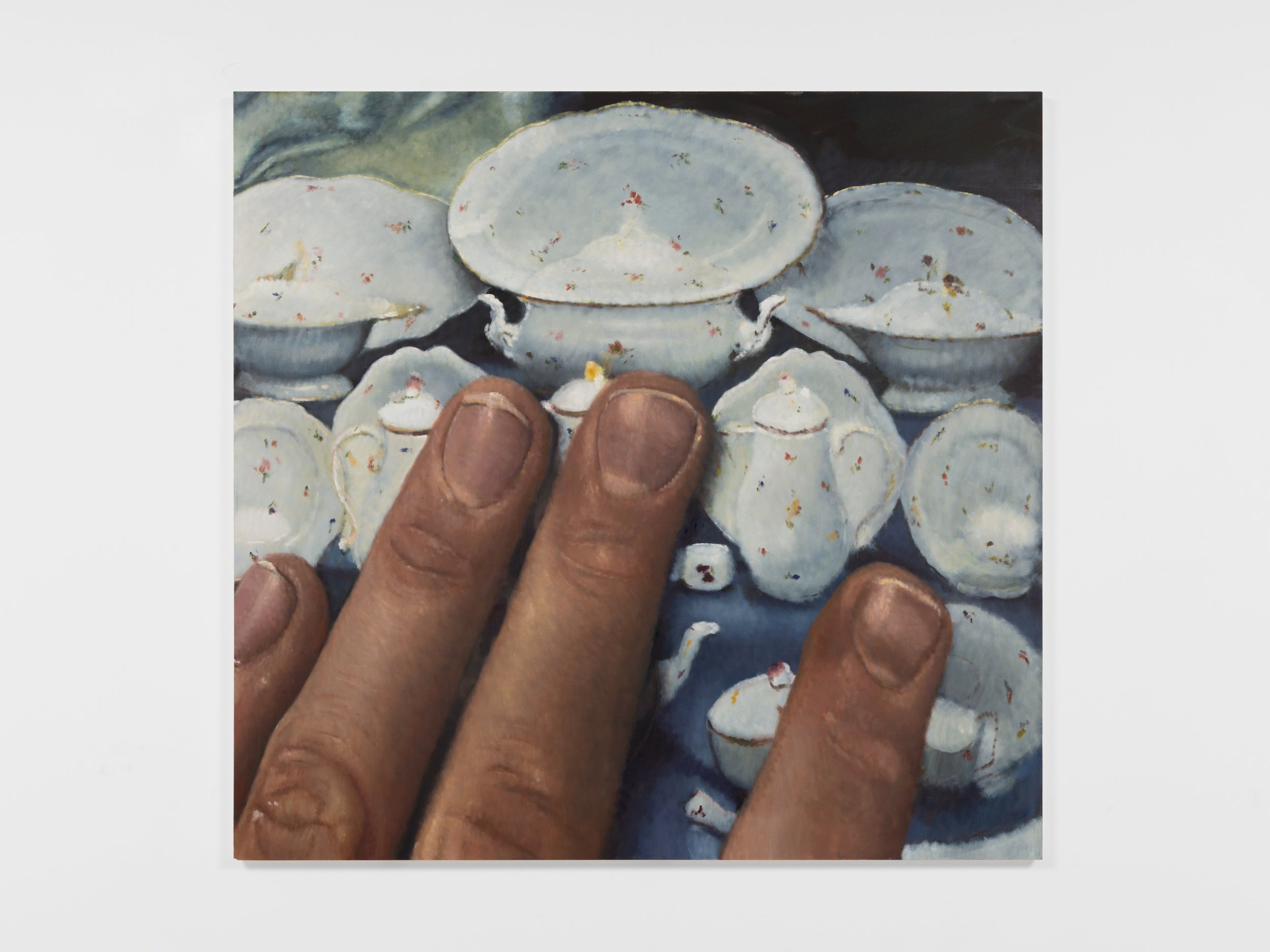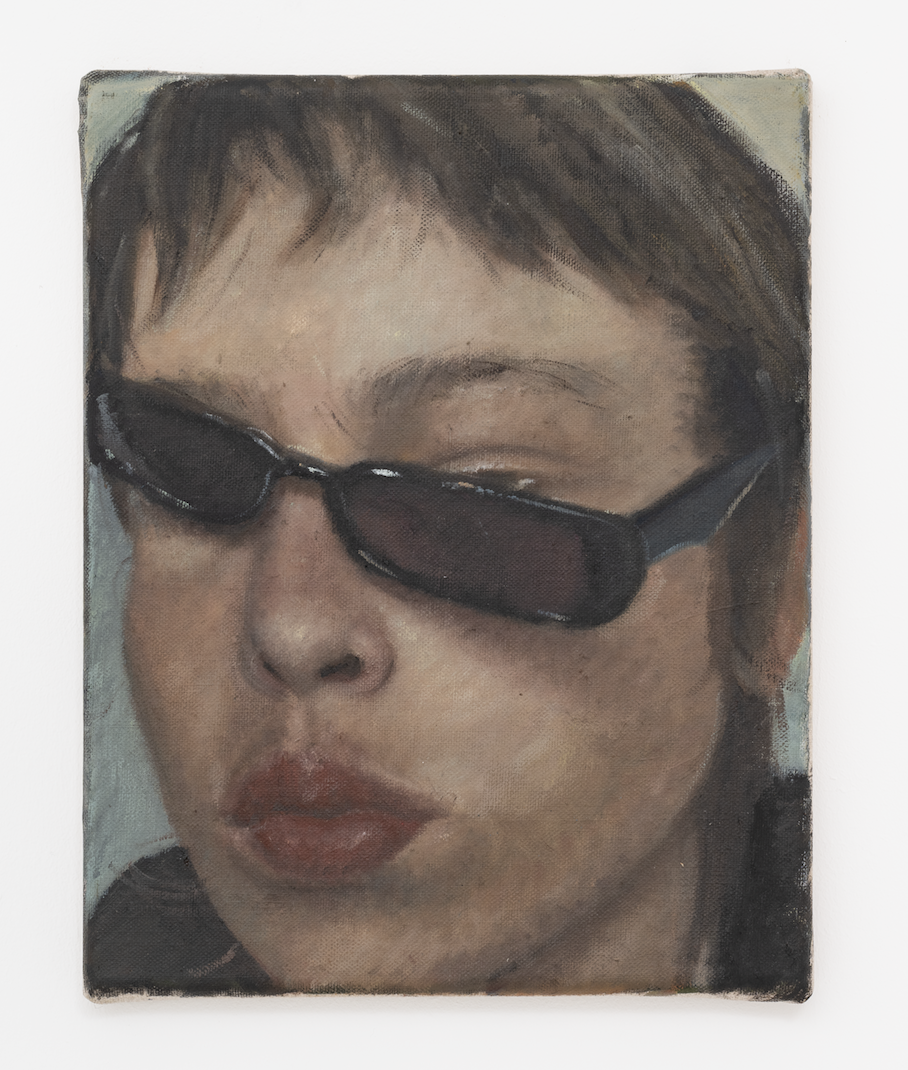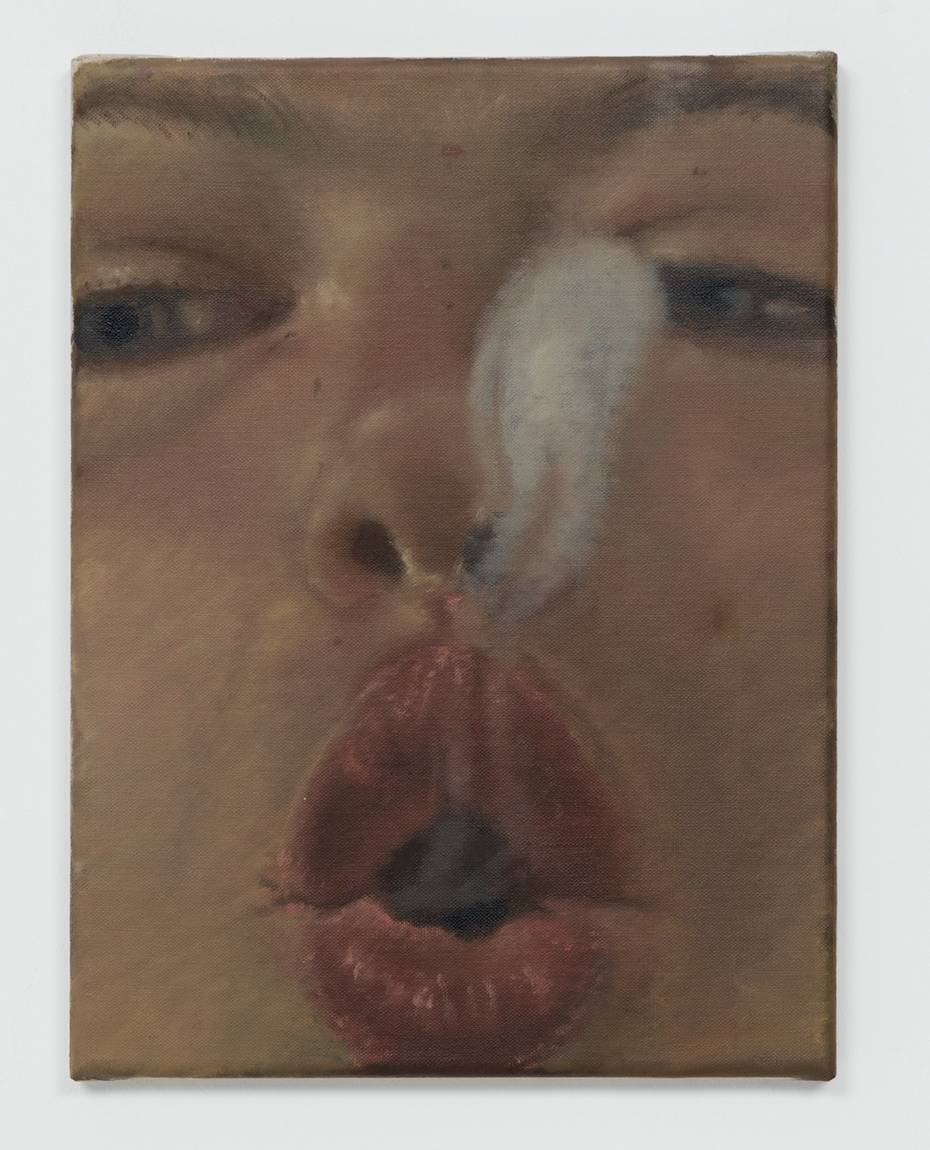Issy Wood: Study for No @ Lafayette Anticipations
Until January 7, 2024, Issy Wood takes over the Lafayette Anticipations – Fondation Galeries Lafayette’s space in Paris. Named after a painting from 2019, Study for No is the London-based artist’s first solo exhibition in a French institution. Displaying over sixty canvases, most of which are being exhibited for the first time, the show investigates the dualities, paradoxes and stalemates of our contemporary society.
Curated by the Foundation’s director Rebecca Lamarche-Vadel and led by Issy Wood’s thoughts and personal anecdotes - most of them shared on her own online blog - Study for No invites visitors to enter the artist’s world, to dive into it as if reading through her diary.
A graduate from Goldsmiths College and from the Royal Academy Schools, Issy Wood lives and works in London. Her artistic practice oscillates between painting, writing and music. Through the depiction of everyday life objects – car interiors, leather coats, porcelain dinner sets, clocks – Wood expresses notions of violence and resistance and explores systems of oppression, both conscious and unconscious, that govern us.
While her work is mainly autobiographical, drawing inspiration from her private life, childhood memories and observations, it challenges universal narratives of intimacy, desire, refusal, and identity.
Issy Wood, Study for No, 2019. Photo Courtesy: Lafayette Anticipations.
The starting point of the exhibition is the small-scale painting Study for No (2019), giving its title to the exhibition. While the work is considered ‘old’ by Issy Wood, a highly prolific artist, it introduces a question which is at the heart of her practice: how to relearn, as an adult woman, to say no?
In the first room, close-ups of empty leather car interiors and Moncler jackets evoke the absence of humanity in consumerism and question the excessive importance given to these objects of desire. The paintings also express the duality between the perceived femininity and masculinity, and the social pressure imposed through valuable objects on the identity and gender construction: the hypersexualized shiny leather jacket, essential to the construction of femininity and the gleaming car interior, a hallmark of male success.
In conversation with Rebecca Lamarche-Vadel, Issy explains: “I feel I arrived very late to womanhood and even later to femininity, picking up signals from my childhood that those two things symbolized weakness. {…} There is always a question about whether opting into these things is empowering or ceding to some toxic precedent. A lot of time I ask myself, “Do I want this? Do I want this coat, these nails, this set of porcelain, a man with this expensive car? What the hell did I inherit? What are my duties?” The ‘no’ comes in handy here.”
Many of the works featured in this first room and in the exhibition are painted on velvet. The medium lends a sophisticated, precious and very classical dimension to her compositions, which she obviously counterbalances by adding more contemporary, almost trashy, elements: fake nails, black punk techno glasses, cigarette smoke… Dualities are at the heart of Issy Wood’s practice. In her double panel velvet painting Steed Energy (2021) for example, she confronts the perceived femininity of the cowhide jacket and the perceived machismo of the knight’s armour.
“Patchwork” paintings like this one allow the artist to crop and censor each picture but are also a reference to some movies from the 2000s that Issy Wood grew up with. The composition of Study for then again 2, divided into several strips, recalls for example the split screen of the Totally Spies. Other references to TV shows and popular culture can be found in some of her works, such as Carmela has the tea, depicting Carmela Soprano’s nails, or Samantha, learning to milk, representing a scene from Sex and the City.
Issy Wood, Steed Energy, 2021. Oil on velvet. Photo Courtesy: Lafayette Anticipations.
Objects coming from her family and from auction catalogs are also an important source of inspiration for the artist. In the next room, the porcelain sets and tureens are a reference to her grandmother and to the inherited social customs, which are very present in her family. She writes: “My grandmother is the only person I know who keeps and uses tureens. She has a respect for fine dining and its rituals and that is somehow both sad to lose over generations and also a relief.”
Through immaculate porcelain sets, she criticises the weight of mores and traditions that she considers obsolete. To Issy, these unspoken rules that “dictate where cutlery goes, which vessel is for which food, how a table is laid” are a great example of how traditions and valuable objects control people and their behaviour. Such as glamorous clothing or fine jewellery, they represent a type of violence, a silent and domestic one, which is mainly imposed on women.
Issy Wood also observes a form of violence through our relationship with pets or animal figurines. To her, animal figurines are mainly a testament to how divorced we have become from nature, and of another form of human domination and eternal contradiction. “We have domesticated animals to the point of tchotchke-status. {…} The tureens say: can you handle seeing the animal you are eating?”.
The exhibition continues with a room devoted to portraits of open mouths undergoing treatment. Teeth being repaired interests the artist, because of the paradoxes she perceives in it: the unpleasant moment at the dentist in order to heal. These paintings of mouths, teeth and dental surgeries evoke the relation between healing and injury, and between interiority and exteriority.
Issy Wood, Study for Wednesday, 2022. Oil on linen. Photo Courtesy: Lafayette Anticipations.
Once again, the works are deeply linked to her personal life, as the artist suffers from eating disorders. This series is also a nod to her childhood and her parents, both doctors: “Perhaps it’s the ubiquity of medical journals on my family’s dining table when I was growing up, looking at hideous rashes over breakfast, but I happen to find anatomy illustrations, disease imagery, and medical models very beautiful.”
The final room is probably the most revelatory of Issy’s intimacy, fears and anxieties. It features her most recent paintings of the exhibition: self-portraits. Painted during the pandemic period, the series paradoxically evokes the artist’s desire to evade self-presentation. Indeed, her face – the subject – is never entirely represented on the canvas: it is always too zoomed-in, too fragmented and partially hidden, by a mask, a mirror, pills, animals, glasses, or a cap…
With humor, cynicism and self-mockery, Issy evokes through this series some of her favorite subjects: interiority, desire, femininity, and identity. They constitute another form of visual diary, an attempt to reflect on identity and the difficulty of its construction.
This room reveals another of Issy’s obsessions: the passage of time. The floor is decorated with clocks and watches, recurring motifs in Issy Wood’s work. In conversation with the curator Rebecca Lamarche-Vadel, she explains “Time is so many things – it’s this huge deal and arbitrary measure. It is the enemy of the depressed person, for whom the days and nights are always too long. It is lateness and pissing people off, earliness and waiting. Aging, jet lag, school sport. Expensive watches as some masculine signifier. 2022 is when the clocks began to adorn the corners of a lot of my paintings. I had to keep reminding myself that time exists.”
Issy Wood, Installation View. Photo Courtesy: Lafayette Anticipations.
Bringing together a broad selection of works, Study for No is an immersion into Issy Wood’s world. Sharp and playful, the works featured in the exhibition reveal the emotional and political dimensions of her practice.
Behind seemingly insignificant objects, the artist reveals the subjects that are at the heart of her work: desire, resistance, refusal, self-reflection and interiority. Wood also explores the ambivalent relation between bodies, tools and objects, often with satirical tones. Through leather car interiors or porcelain services, the exhibition challenges our beliefs and opinions, which are often pre-constructed by our social environment and family heritage.
Most of all, the artist depicts the power struggles at play in our society, and denounces the silent violence, mostly domestic, that emanates from it. She unravellers the mechanisms of power and paradoxes of a sexist and conservative society.
Issy Wood’s Study for No is on view at Lafayette Anticipations until January 7th 2024.
Clara Eugène
Contributing Writer, MADE IN BED



